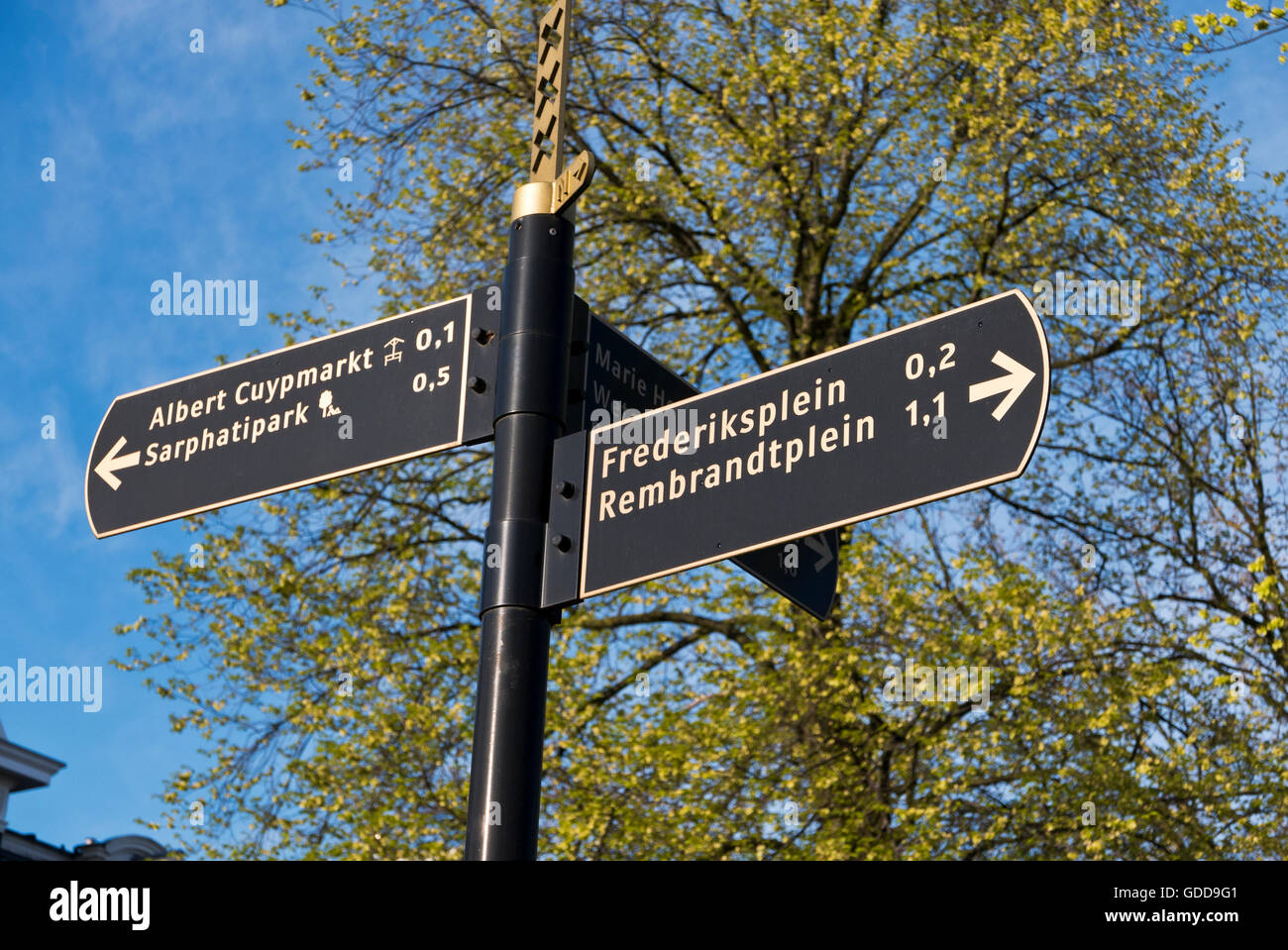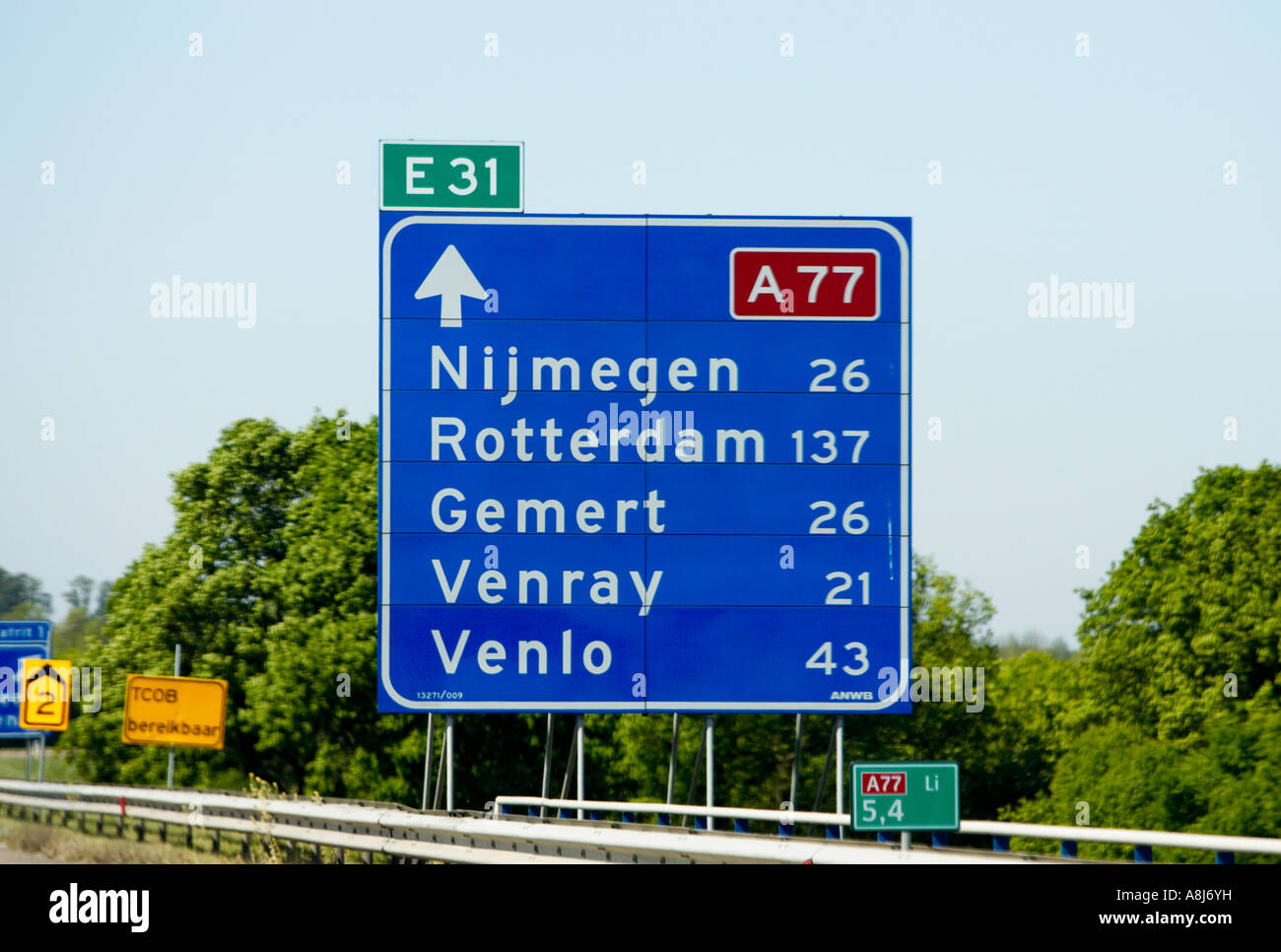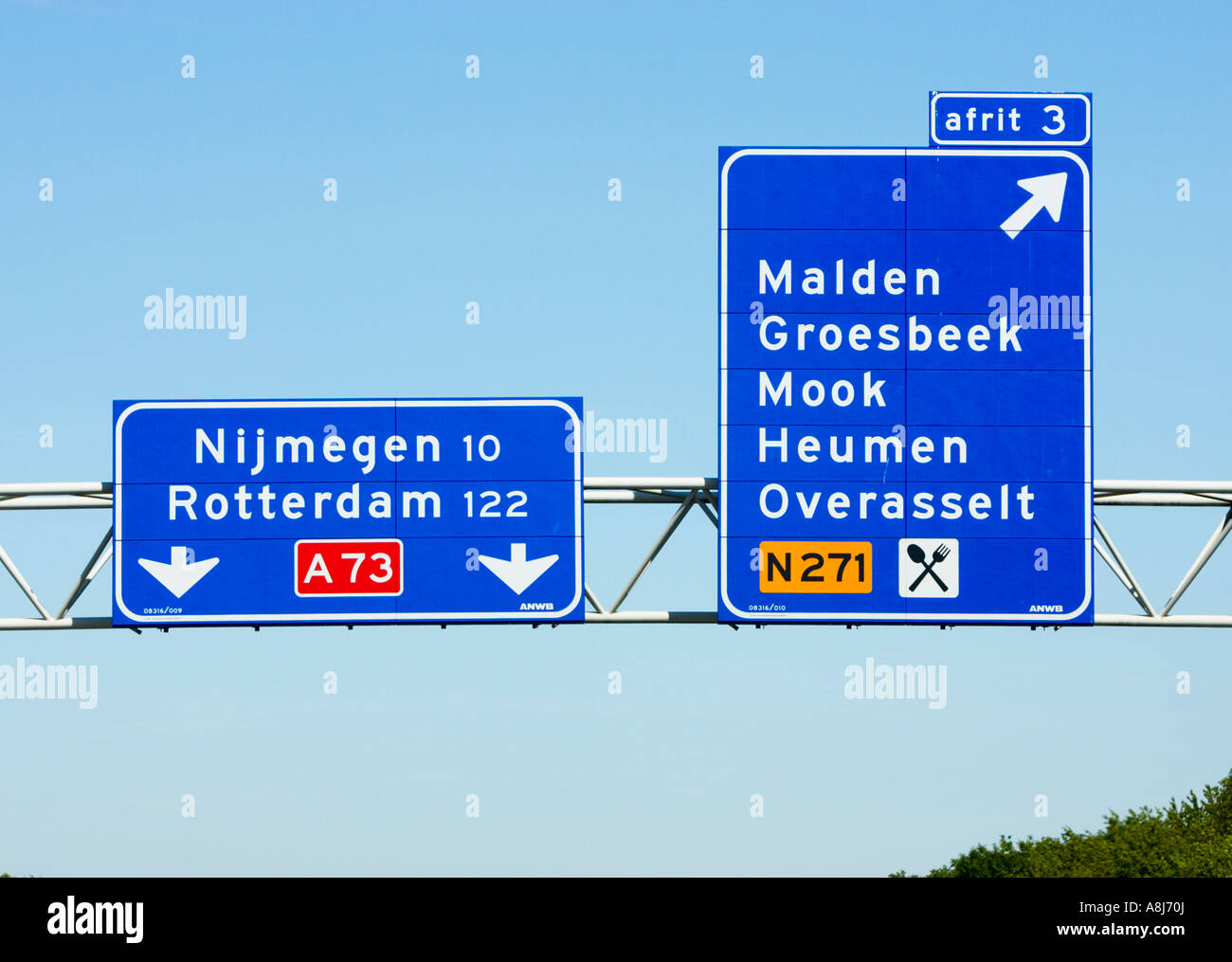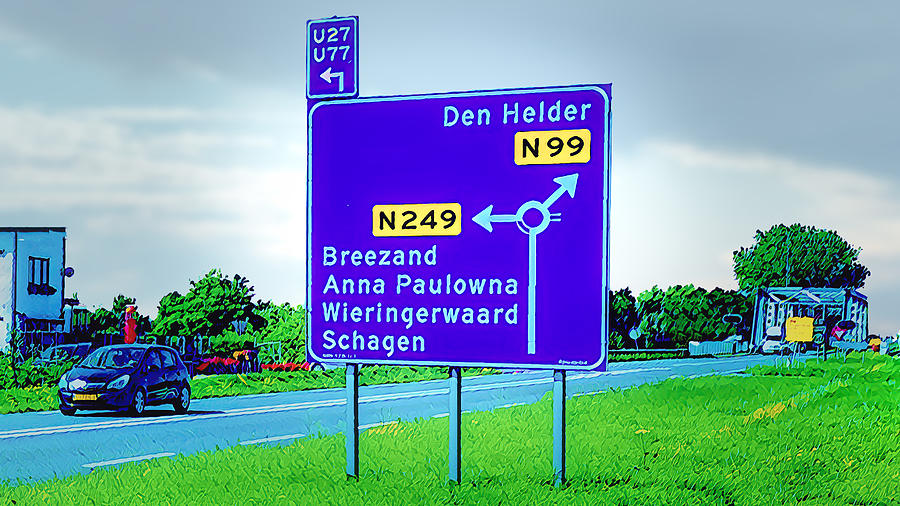
Road signs amsterdam holland netherlands hires stock photography and images Alamy
The Ministry of Infrastructure and Water Management has commissioned HR Groep, specialist in (traffic) objects in public space, to collect the required data on virtually all the traffic signs along and over all the roads in the Netherlands. HR Groep will keep such data up-to-date for the two years ahead, with the possibility of an extension.

Dutch Traffic Sign with Road Number Stock Image Image of traffic, kilometers 13805243
A Diagrams of additional road signs of the Netherlands (1 C, 2 F) D Diagrams of motorway exit signs of the Netherlands (117 F) H Diagrams of historic road signs of the Netherlands (17 C, 11 F) I Diagrams of information road signs of the Netherlands (42 F) M Diagrams of mandatory road signs of the Netherlands (1 C, 4 F)

NETHERLANDS Road Sign Isolated on White Stock Photo Image of board, greeting 146718290
Let's start with some common and important road signs in the Netherlands: Speed limit signs These signs indicate the maximum speed allowed on a particular road or section of the road. Common speed limits include 30 km/h in residential areas, 50 km/h on urban roads, and 80 km/h or 100 km/h on rural roads, depending on the type of road.

Road traffic sign holland hires stock photography and images Alamy
The Netherlands has one of the best road safety records in Europe. The number of road deaths is decreasing every year. In 2014 there were 570 road deaths, 11% fewer than in 2009. The Government is aiming to reduce the number of road deaths even further to less than 500 in 2020. This will be done by clamping down on traffic offenders, providing.

Welkom in Nederland to the Netherlands sign along highway A16 Stock Photo, Royalty Free
Road Trac Signs and Regulations in the Netherlands | 9 Trac Regulations and Road Signs 1990 2 Tra c Regulations 2.1 Road positioning Article 3 (Article 1, 2, 2a and 2b in Appendix 3) 1 Drivers are required to keep as far over to the right as possible. 2 Cyclists are permišed to ride two abreast. This does

Dutch motorway destination distance sign The Netherlands Europe Stock Photo Alamy
Make sure you understand the road signs you see in the Netherlands. The road network in the Netherlands is dense and busy but in good condition. Rules and road signs are similar to those of other mainland European countries.

Road Traffic Signs and Regulations in The Netherlands (HW 300817) YouTube
A1: Speed limit (50 km/h) A2: End of speed limit (50 km/h) A3: Speed limit displayed on an electronic display panel A4: Recommended speed A5: End of recommended speed Priority B1: Priority road (formally used B2: End of priority road B3: Crossroads with priority B4: Road junction with priority over minor road from the left

Road Sign at Weesp the Netherlands Editorial Stock Photo Image of traffic, direction 123321983
Road Traffic Signs and Regulations in the Netherlands 5 2.26a Seats 21 2.27 Seat belts and child restraint systems 21 2.28 Safety helmets 24 2.29 Child seats on bicycles and mopeds 25 2.30 Use of mobile telecommunications equipment 26 2.31 Conveyance of persons in or on trailers and in loading space 26 3 Road Signs 27 3.1 General provisions 27

Netherlands Traffic Signs Move to Netherlands
Free Shipping on eBay! Shop for Street Signs now

Road signs in Amsterdam, Holland, Netherlands Stock Photo Alamy
Driving in the Netherlands. The Netherlands is a small country with an extensive and well-maintained road network. Highways connect all major towns, making it convenient to drive to and from different cities, regions, and even neighboring countries.In many ways, driving in the Netherlands is similar to driving in other European countries and motorists drive on the right-hand side of the road.

Motorway sign netherlands blue hires stock photography and images Alamy
Speed limits. In December 2019, the Dutch government decided to reduce the maximum speed on motorways from 120 or 130 km/h to 100 km/h during the day between 6am and 7pm. Between 7pm and 6am, you are allowed to drive at 120 or 130 km/h on motorways (depending on the road). In the Netherlands, there is no minimum speed you need to adhere to.

Dutch Traffic Sign at Side of a Road Editorial Stock Photo Image of hoge, beware 193952478
Warning signs in Netherlands are often red or yellow to advise of potential danger. You should take note of any warning signs in Netherlands as they are designed to alert you of possible dangers ahead. Traffic light ahead Rail crossing ahead with more than 1 railway road narrows ahead Warning for low lfying planes, aircraft and jets

Netherlands Free of Charge Creative Commons Highway sign image
H Historic road signs in the Netherlands (3 C, 74 F) M Mandatory road signs in the Netherlands (2 C, 25 F) P Paddenstoel (1 P, 44 F) Parking signs in the Netherlands (60 C, 3 F) Pedestrian path signs in the Netherlands (2 C, 5 F) Pedestrian zone signs in the Netherlands (16 F) Priority road signs in the Netherlands (3 C, 9 F)

Netherlands Road Sign Image & Photo (Free Trial) Bigstock
Roundabout. This sign warns you that you are approaching a roundabout. Roundabout, compulsory driving direction. This sign is often located near or on a roundabout and indicates the mandatory driving direction. Road closed Road closed in both directions for vehicles and handlers of animals or livestock. You may not enter this road with any vehicle.

Motorway Netherlands information sign at the border entering The Netherlands, Europe Stock Photo
There are various types of Dutch road signs you need to know about: Onderbord (a traffic sign below a main sign) In the Netherlands, sometimes a traffic sign features an additional sign underneath it, this is called an " onderbord " in Dutch.

Traffic sign, Netherlands Digital Art by Rob De Ruiter
As we know, a stopbord means that the approaching bestuurder (driver) must come to a complete stop and voorrang geven (yield way) to any passing weggebruikers (road users) before proceeding. This means that it can only be used if there are voorrangswegen (priority roads). These were only introduced in 1936 in the Netherlands.